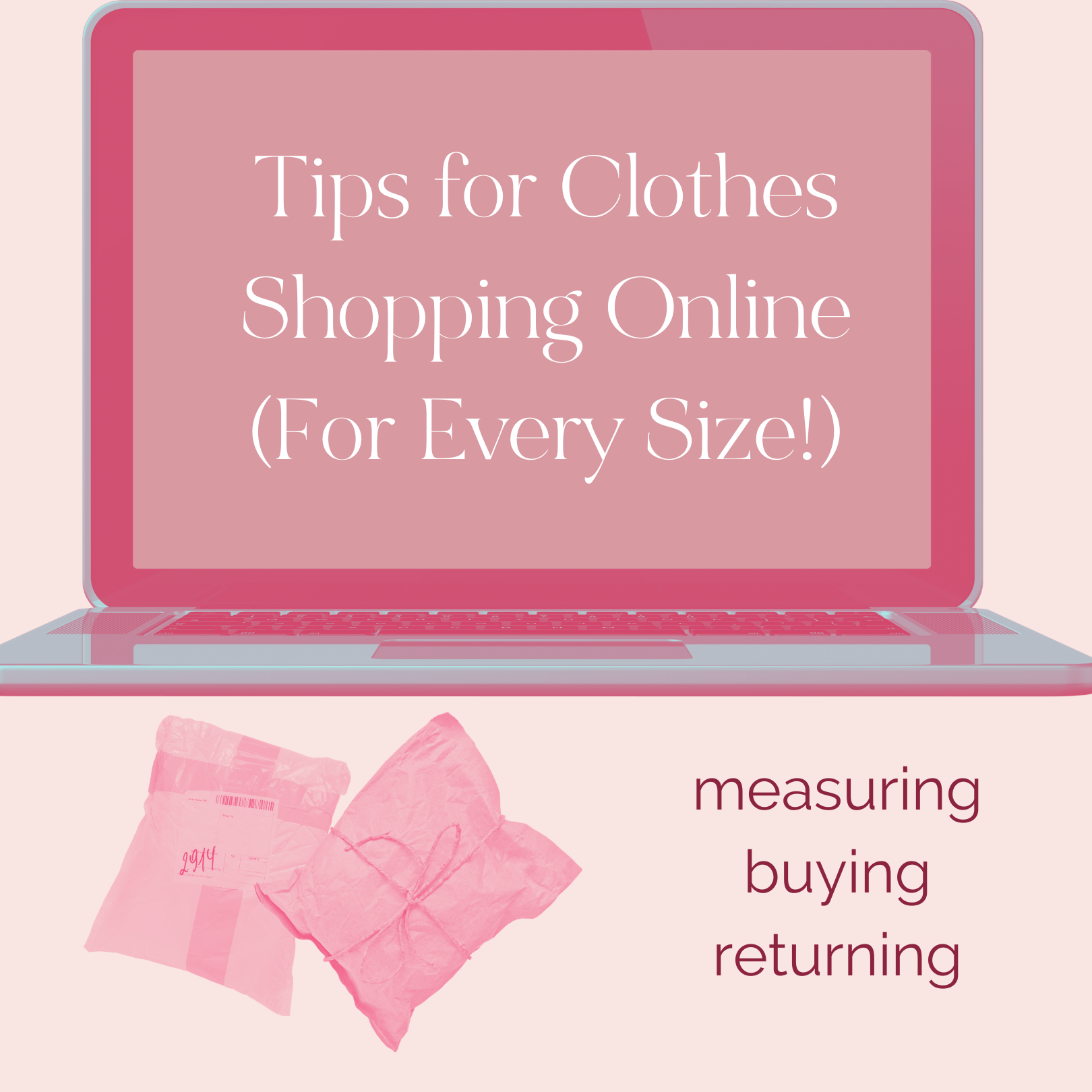Contrary to popular belief, we have not all become experts in shopping for clothes online in the past year, despite the fact that we’re relying on online shopping more than ever. So especially after doing some closet cleaning (did you see my blog post on that too?) as part of your spring cleaning and winter reset, and treating yourself to a few new pieces, here’s my ultimate cheat sheet to shopping online.
Before you keep reading: you’re shopping to dress your body according to the size of the individual piece, not your “body size” or what you typically fit into over the years. The clothes are meant to fit your body– not the other way around. PLAY WITH THIS.
If you think an oversized look would be fabulous as something more form fitting, size down. And don’t be afraid to buy even multiple sizes up and get specific parts tailored, or experiment with the accessories in your closet to make clothes fit the way you want them to.
Before you buy
- Know and take your measurements
- Your big three measurements that you need to know are your bust, waist, and hips
- To measure your bust – take some measuring tape and wrap it all the way around the fullest part of your breasts
- Where’s your waist? It’s the narrowest part of your torso
- Your hips are the fullest around your butt
- Look at size charts for everything
- Did I say everything? Because I meant EVERYTHING. Especially on sites that carry different brands (like ASOS, Modcloth, etc.)
- Depending on the site you’re on, a small could mean anything from a 0-4, a large could be between an 8 to a 14. The size chart will break it down for you.
- If you’re unsure of your size, check your measurements on the size chart!
- Read the reviews
- Reviews can be major, especially if there are consistent praise or pain points.
- Websites that have a review section where commenters can include their typical sizes, height, bra size, etc. can also help you get a better idea of how something might fit. Look for reviewers who have a similar body type to yours to get an idea of what you might think of it.
- One bad review doesn’t mean you shouldn’t buy it.
- Look for comments about the material/fabric – if it’s really stiff, see through, has little stretch, etc.
- Look at the material itself! Polyester can be very form-flattering, but also doesn’t breathe and can make you sweaty – i.e., a tight long-sleeved polyester dress might not be the most comfortable for everyday or work wear.
- Understand the difference between brands designed for “juniors” vs “women”
- Clothing brands that have a younger demographic will run anywhere from 1-2 sizes smaller than clothing designed for women
- A small is typically a size 0, medium is a 4-6, and large is an 8-10 in juniors
- There is also usually less stretch, and not as much room for curves (thighs, butt, hips, waist, and breasts)
- When to buy multiple sizes
- If something looks like it might be really tight in one particular area, it can be helpful to grab the next size up too.
- Look out for the parts of the piece that are more defined or have a tighter fit, i.e. what the sleeves and arms look like, how much give (or lack thereof) there is in the bust, and whether the shape is slightly flared or is meant to hang straight.
- If a clothing item looks like it’s meant to hang straight on the model, and you are very curvy, it might be worth it to get a size up depending on the look you’re going for. Before you know it, that cute and casual t-shirt dress feels more like a bodycon– of course, you can totally rock it, but it all depends on your preference and thinking about what size you typically are versus how you want the piece to look on your body.
- Consider the quality of what you’re buying
- Websites that sell clothes where the price point is on average $20-50 are not selling clothes that are meant to last.
- Sometimes you’ll want to grab a specific trend, so investing a lot of money in a short-lived trend doesn’t make sense
- If it’s something you know you’ll want to wear a lot, consider investing a little more money into it, so the lifespan of the clothes will be longer
After it arrives!
- If it’s not a perfect fit, is it worth getting altered?
- When you purchase something, and you love everything about it, but it just needs some small adjustments, consider taking it to a tailor!
- Check return policies
- Do they have a return policy?
- If it’s store credit only, you’ll absolutely want to know before making a lot of purchases.
- How many days do you have to return it? 30 days? 60? 90? 365 days? Forever?
- Best policy, try it on ASAP, make your decision about whether or not to keep it when you’re trying it on, and either send it back or add it to your closet right after you make your decision
- Do they have a return policy?
